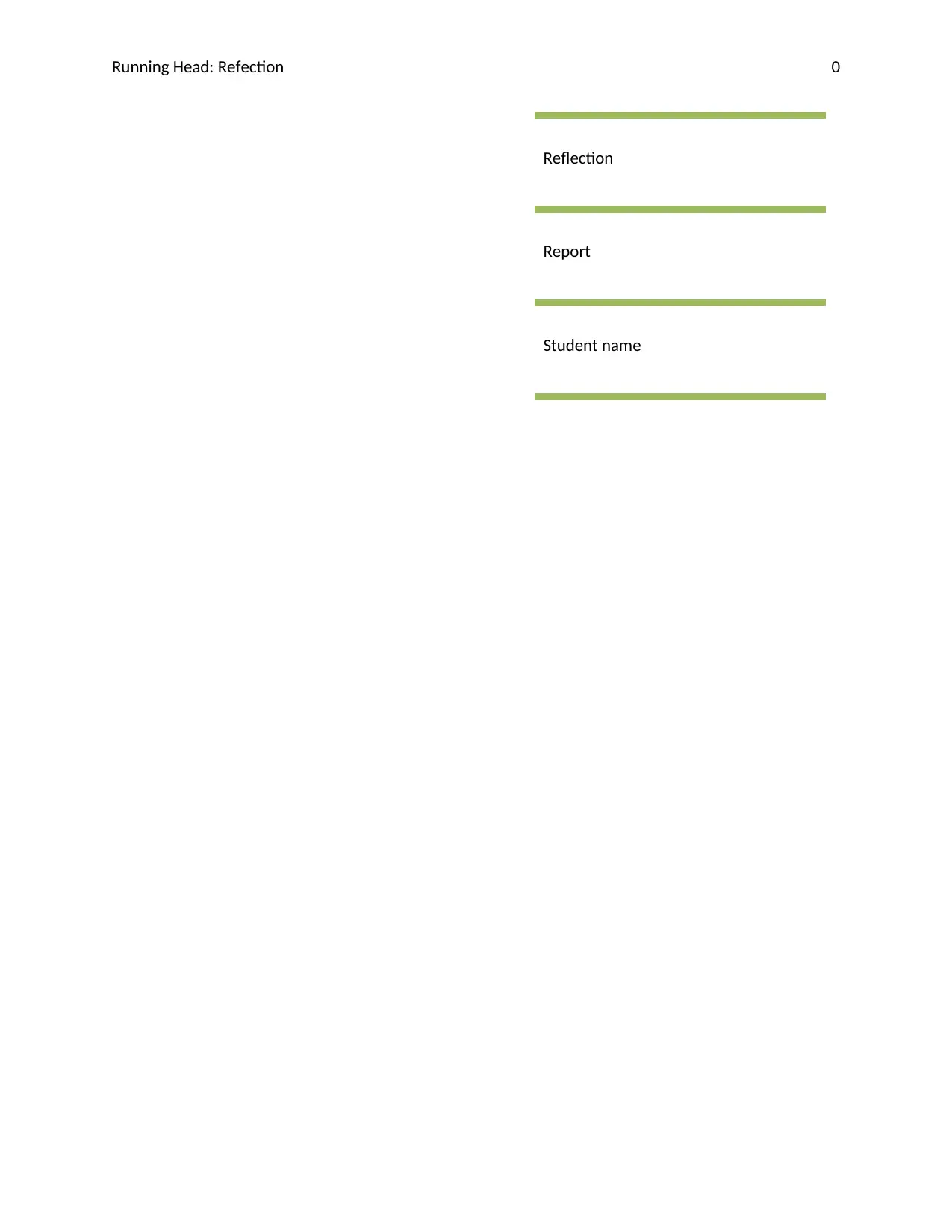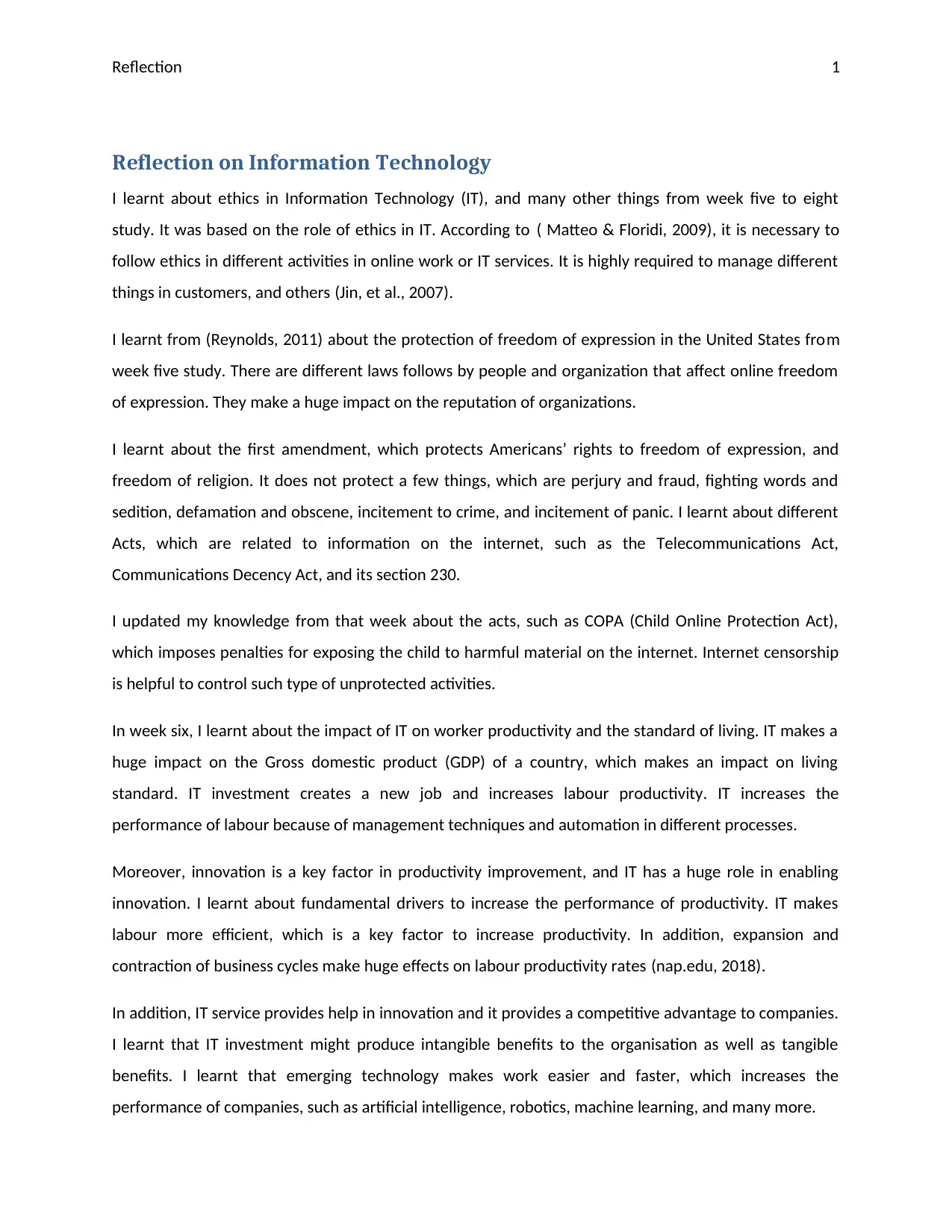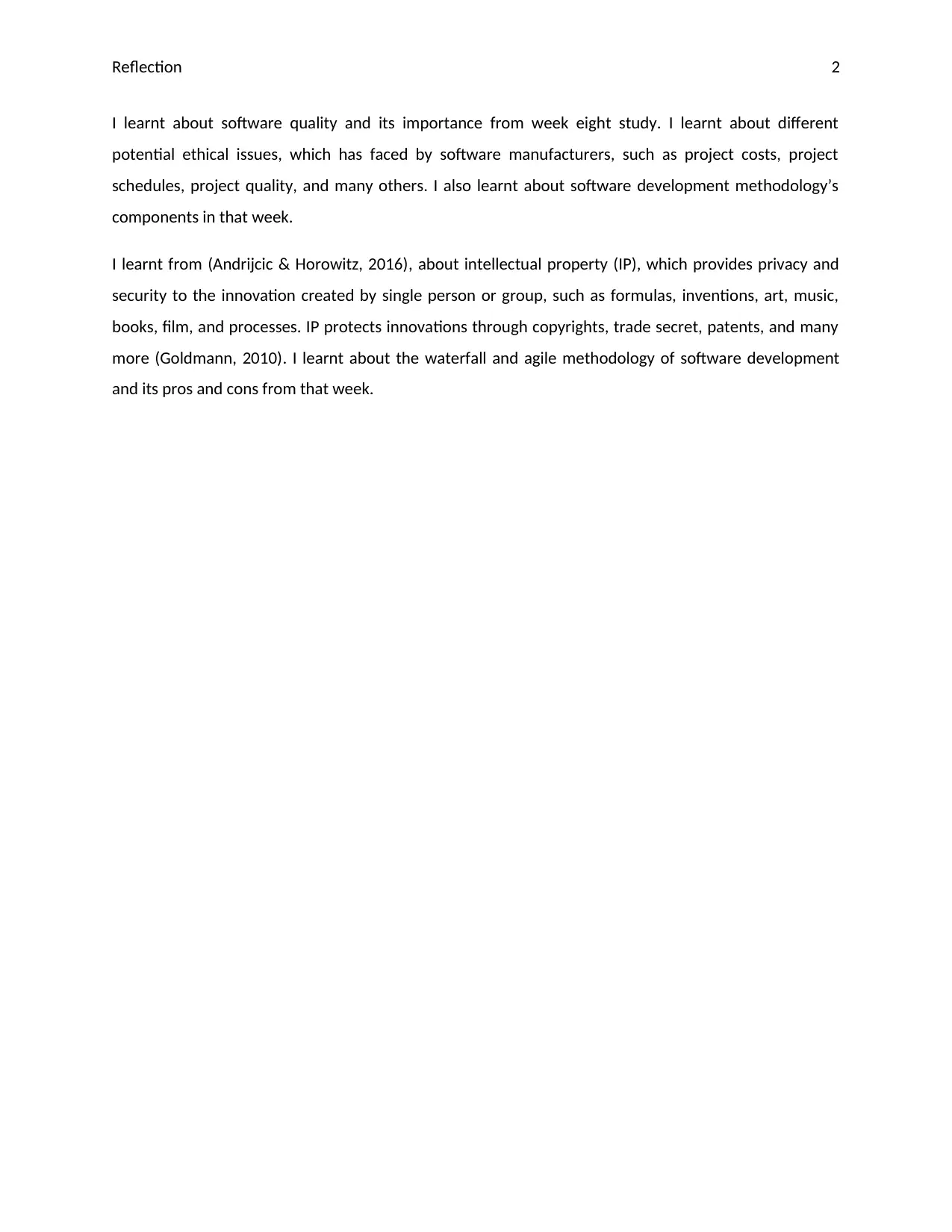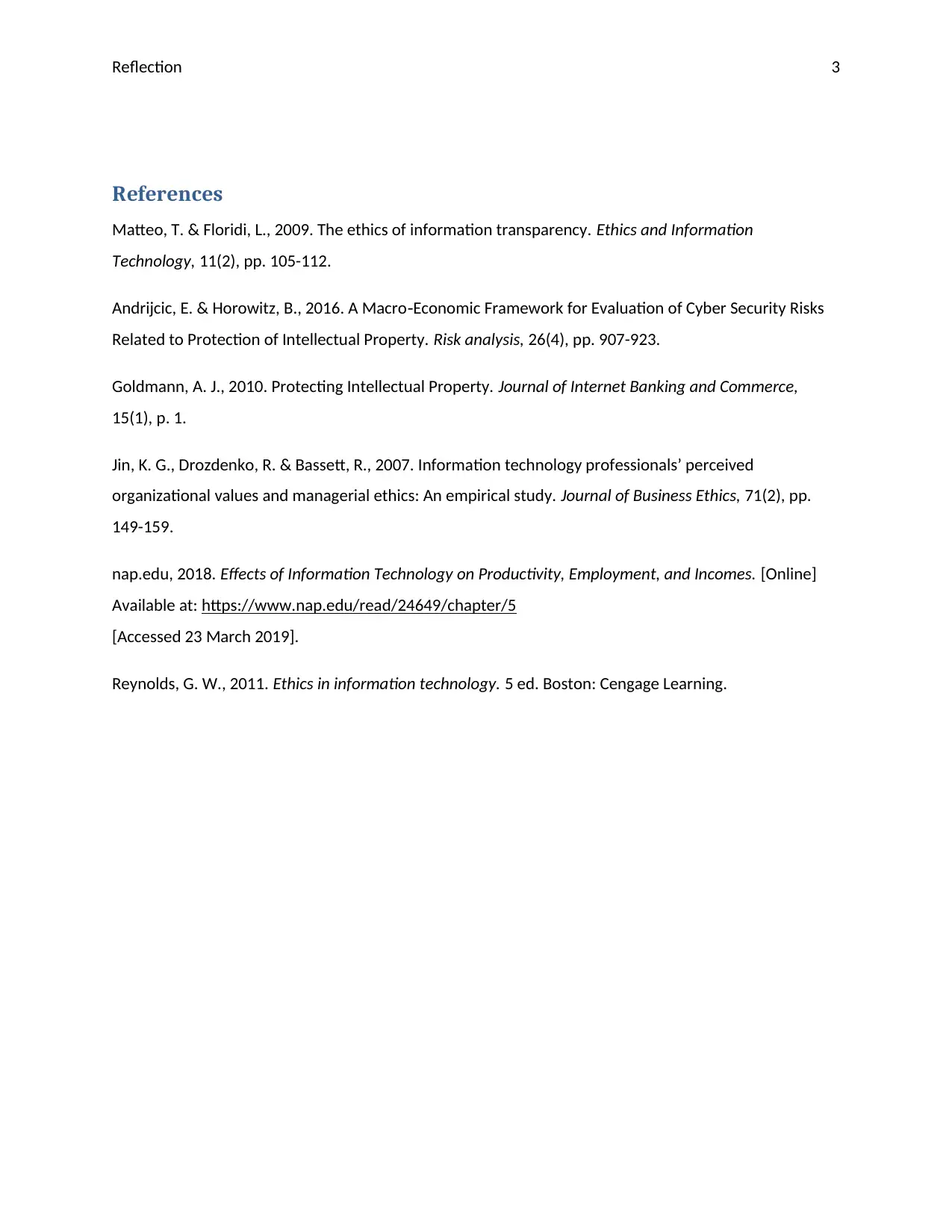Reflection Report on Ethics in Information Technology (ISY1000)
VerifiedAdded on 2023/04/03
|4
|656
|445
Journal and Reflective Writing
AI Summary
This reflection report, submitted by a student, details their learning journey in an Information Technology course, specifically focusing on ethics. The report covers the ethical considerations in IT, including freedom of expression, intellectual property, software quality, and the impact of IT on worker productivity and the standard of living. The student reflects on topics such as the First Amendment, relevant acts related to internet information, the impact of IT on GDP and labor productivity, and the importance of software quality and ethical decision-making in software development. The report also touches upon emerging technologies like artificial intelligence, robotics, and machine learning. The student references various academic sources to support their reflections, demonstrating a comprehensive understanding of the ethical dimensions within the field of information technology.
1 out of 4











![[object Object]](/_next/static/media/star-bottom.7253800d.svg)